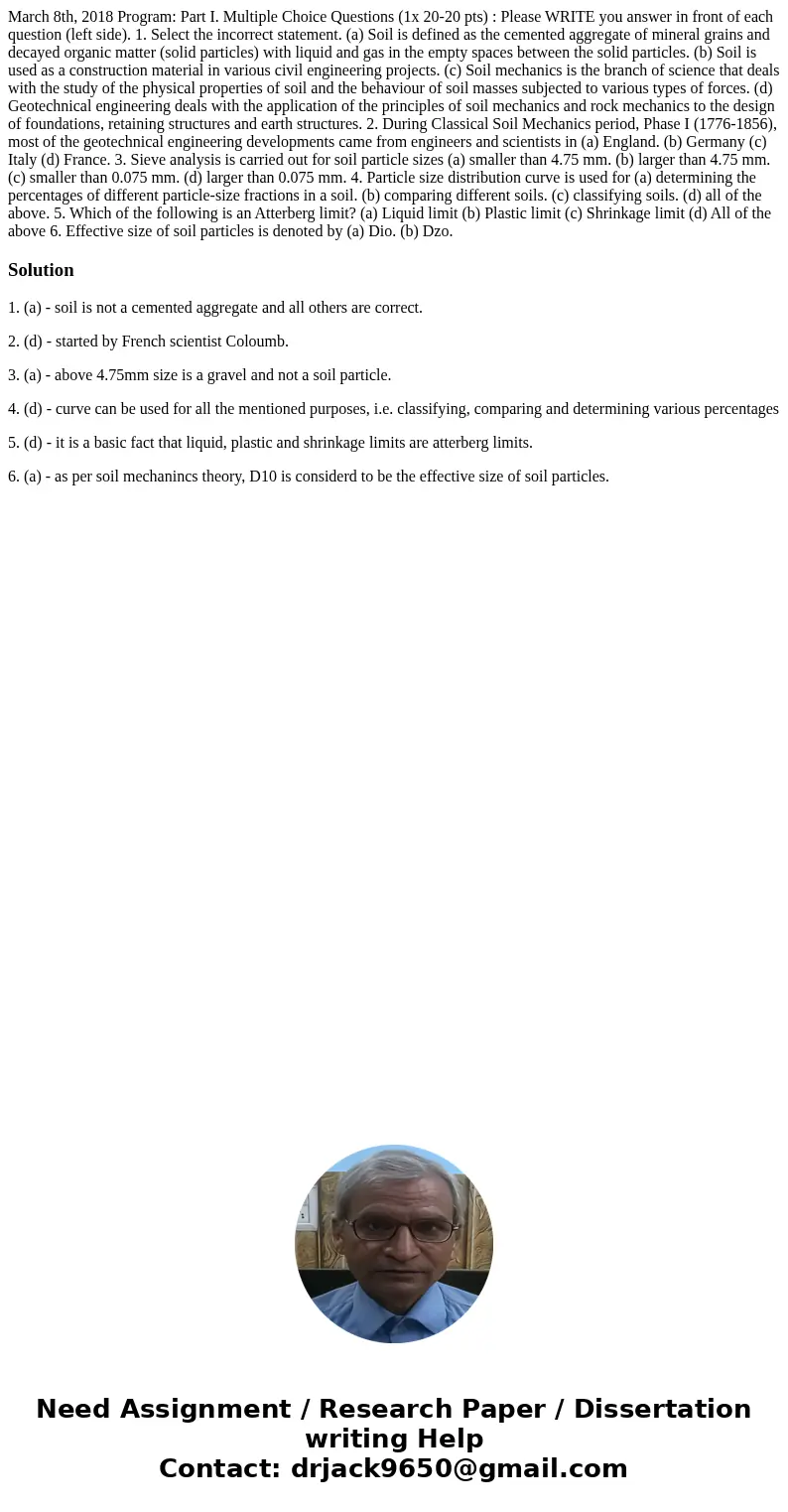March 8th 2018 Program Part I Multiple Choice Questions 1x 2
March 8th, 2018 Program: Part I. Multiple Choice Questions (1x 20-20 pts) : Please WRITE you answer in front of each question (left side). 1. Select the incorrect statement. (a) Soil is defined as the cemented aggregate of mineral grains and decayed organic matter (solid particles) with liquid and gas in the empty spaces between the solid particles. (b) Soil is used as a construction material in various civil engineering projects. (c) Soil mechanics is the branch of science that deals with the study of the physical properties of soil and the behaviour of soil masses subjected to various types of forces. (d) Geotechnical engineering deals with the application of the principles of soil mechanics and rock mechanics to the design of foundations, retaining structures and earth structures. 2. During Classical Soil Mechanics period, Phase I (1776-1856), most of the geotechnical engineering developments came from engineers and scientists in (a) England. (b) Germany (c) Italy (d) France. 3. Sieve analysis is carried out for soil particle sizes (a) smaller than 4.75 mm. (b) larger than 4.75 mm. (c) smaller than 0.075 mm. (d) larger than 0.075 mm. 4. Particle size distribution curve is used for (a) determining the percentages of different particle-size fractions in a soil. (b) comparing different soils. (c) classifying soils. (d) all of the above. 5. Which of the following is an Atterberg limit? (a) Liquid limit (b) Plastic limit (c) Shrinkage limit (d) All of the above 6. Effective size of soil particles is denoted by (a) Dio. (b) Dzo. 
Solution
1. (a) - soil is not a cemented aggregate and all others are correct.
2. (d) - started by French scientist Coloumb.
3. (a) - above 4.75mm size is a gravel and not a soil particle.
4. (d) - curve can be used for all the mentioned purposes, i.e. classifying, comparing and determining various percentages
5. (d) - it is a basic fact that liquid, plastic and shrinkage limits are atterberg limits.
6. (a) - as per soil mechanincs theory, D10 is considerd to be the effective size of soil particles.

 Homework Sourse
Homework Sourse